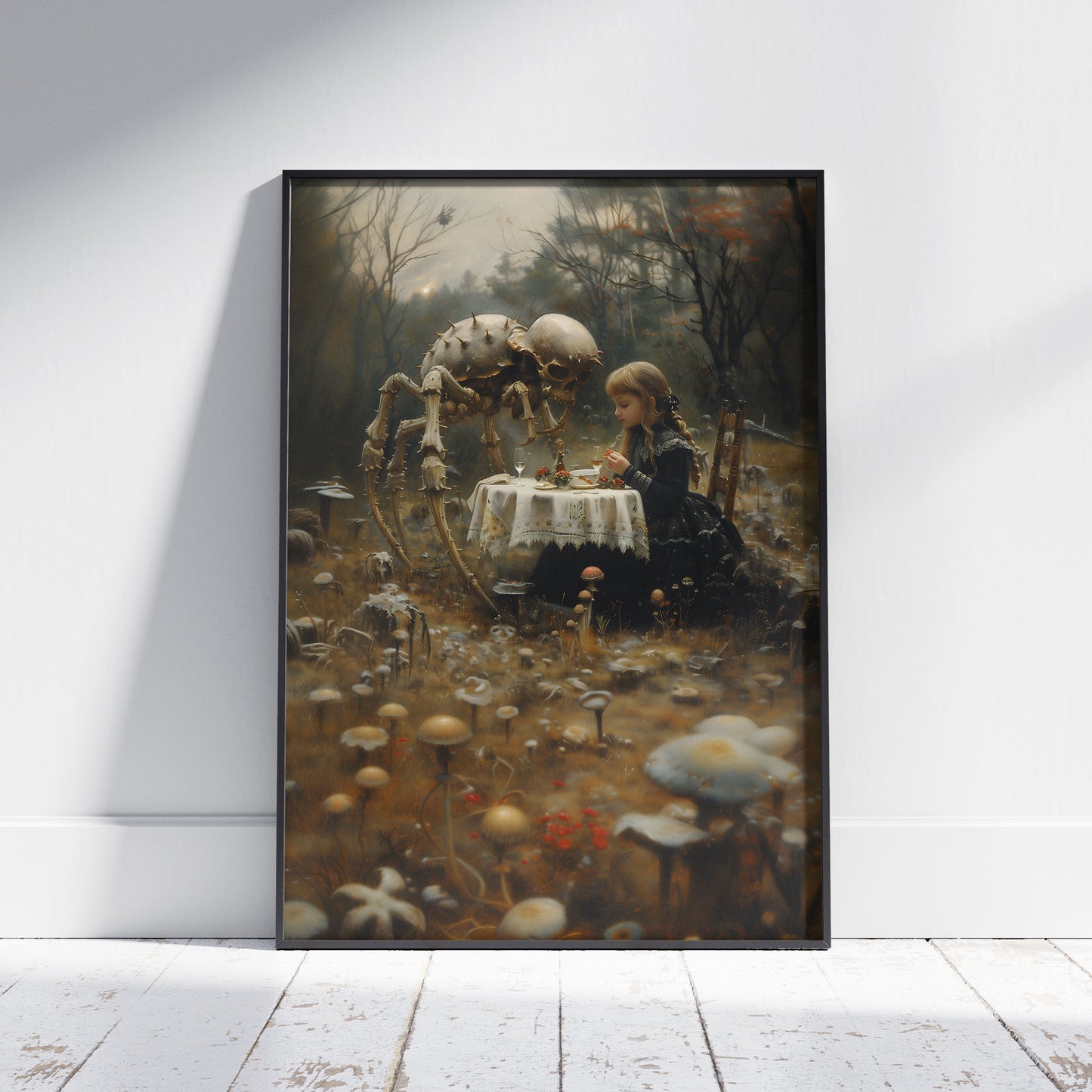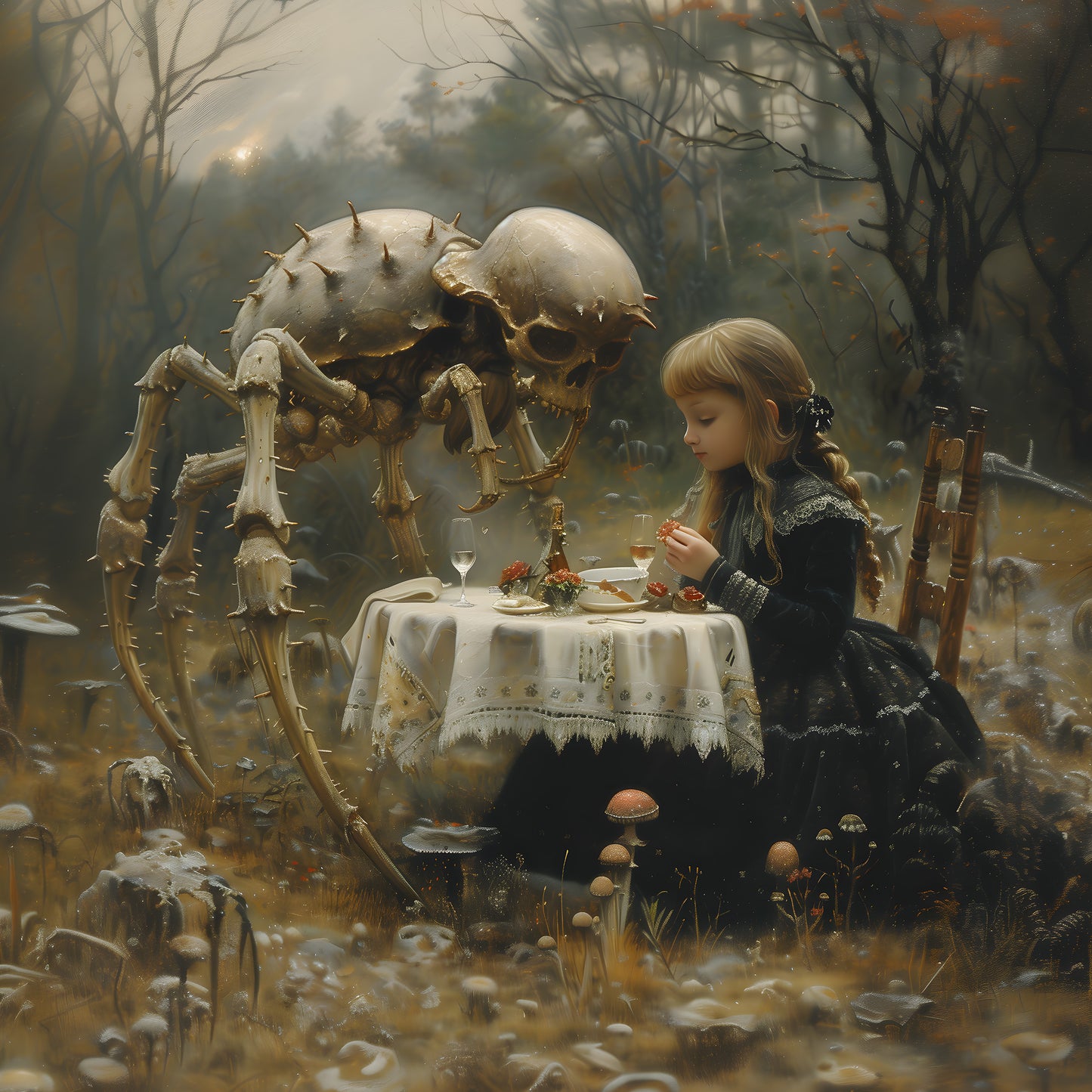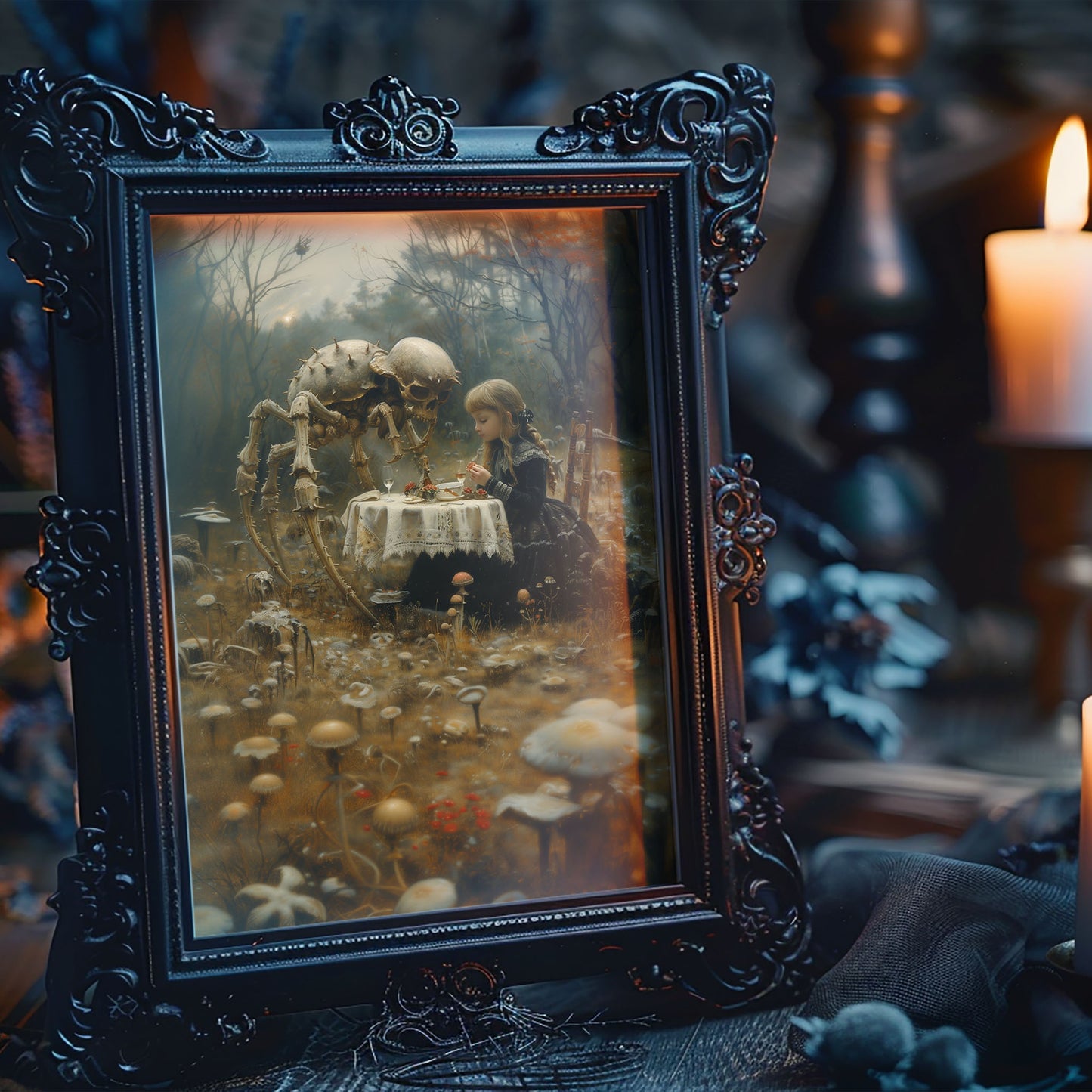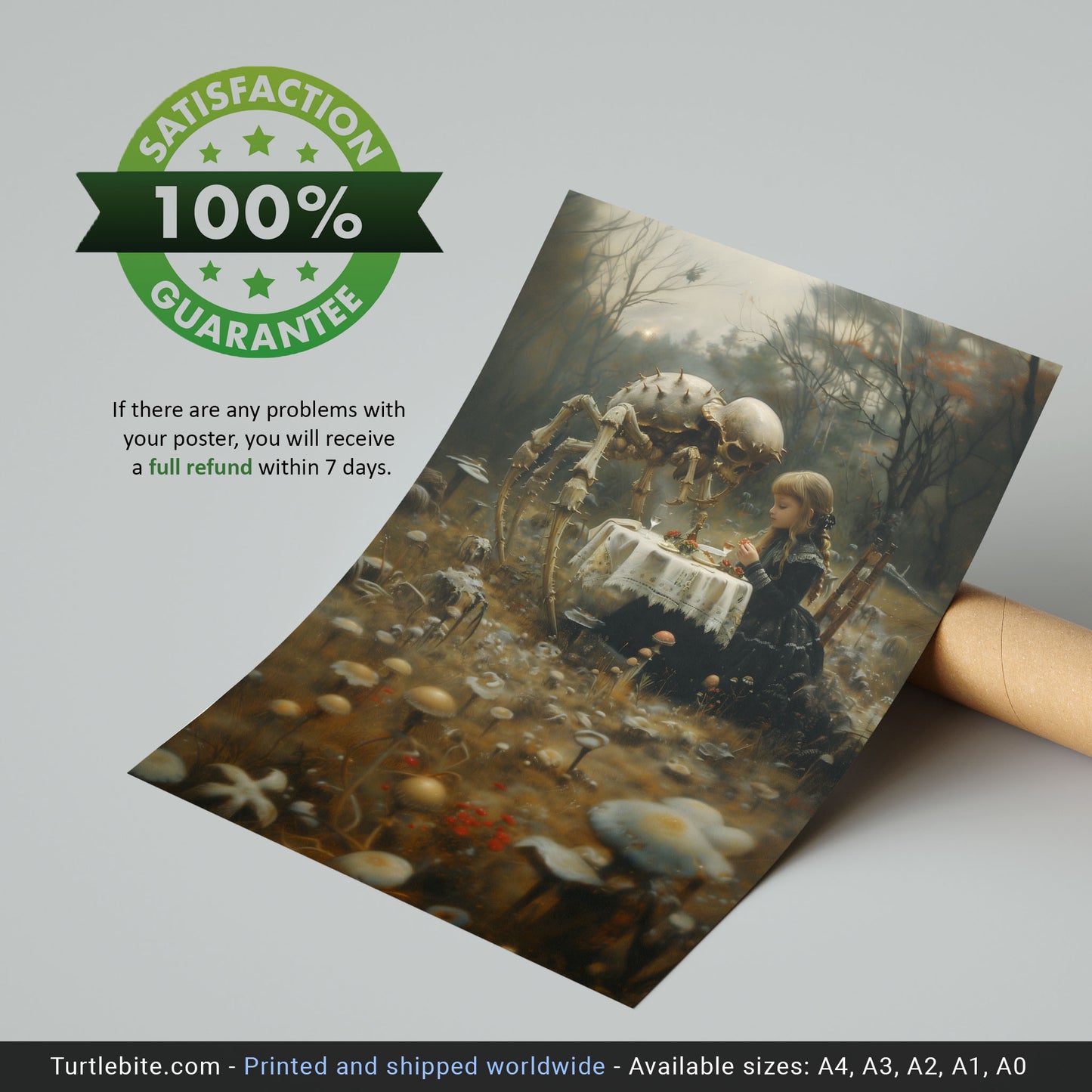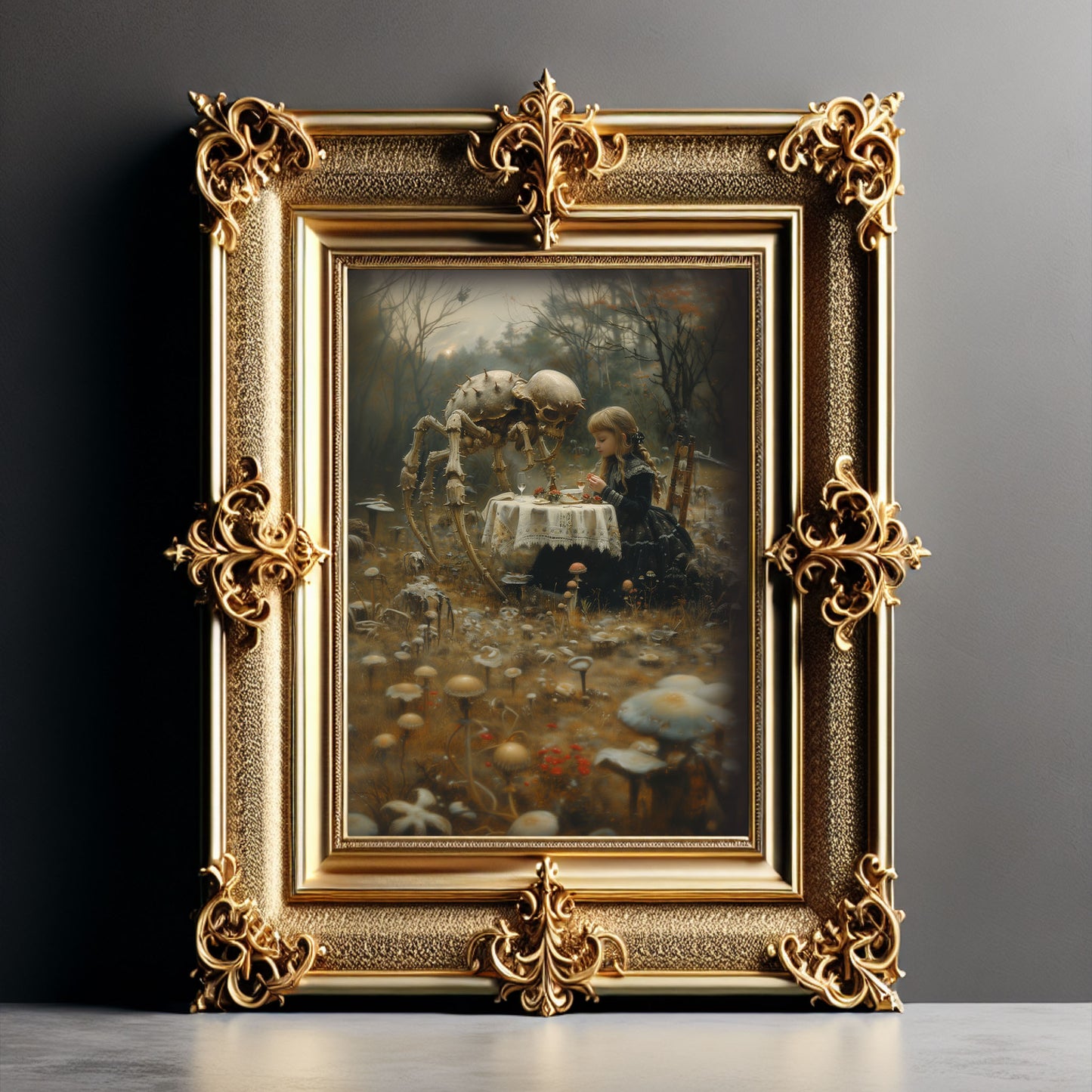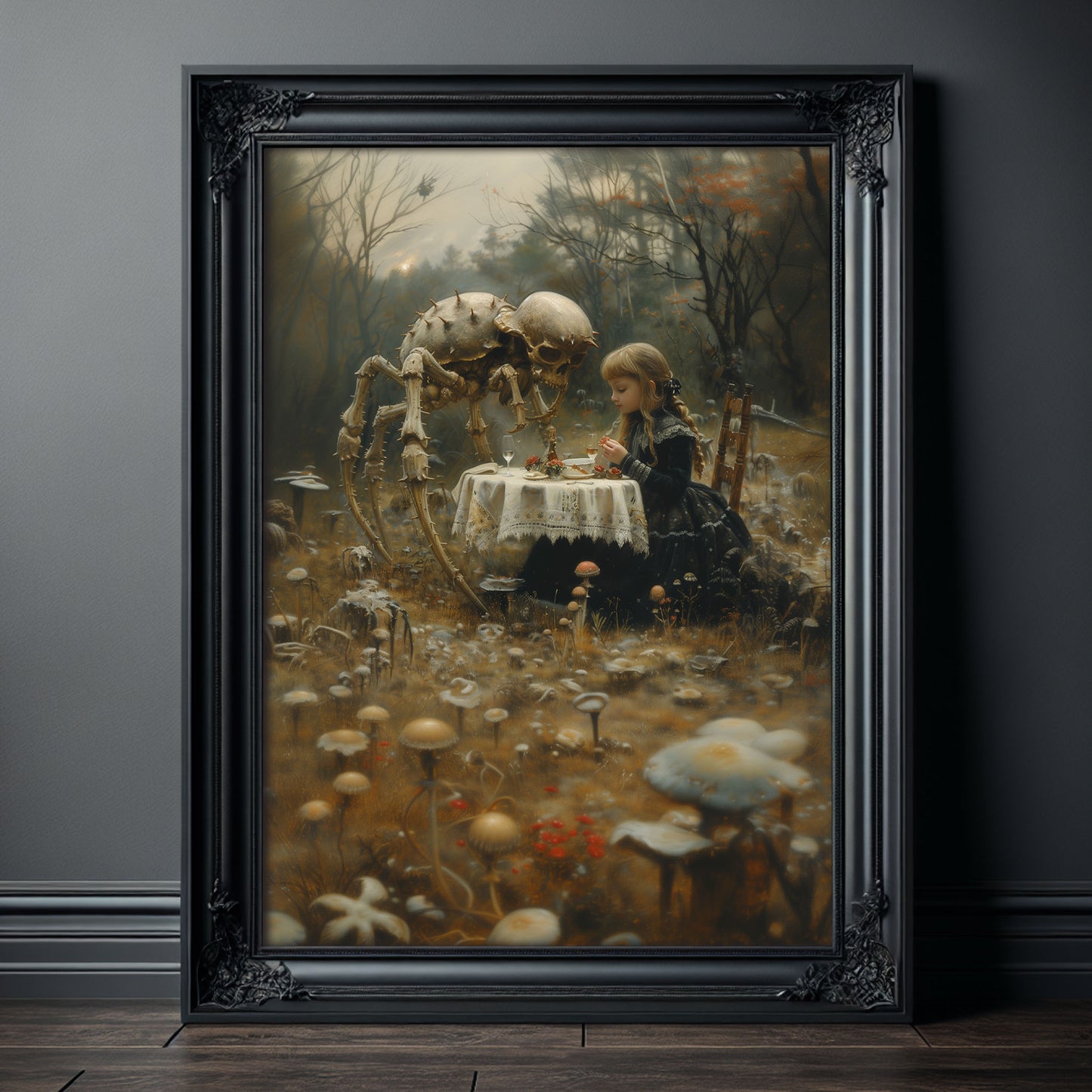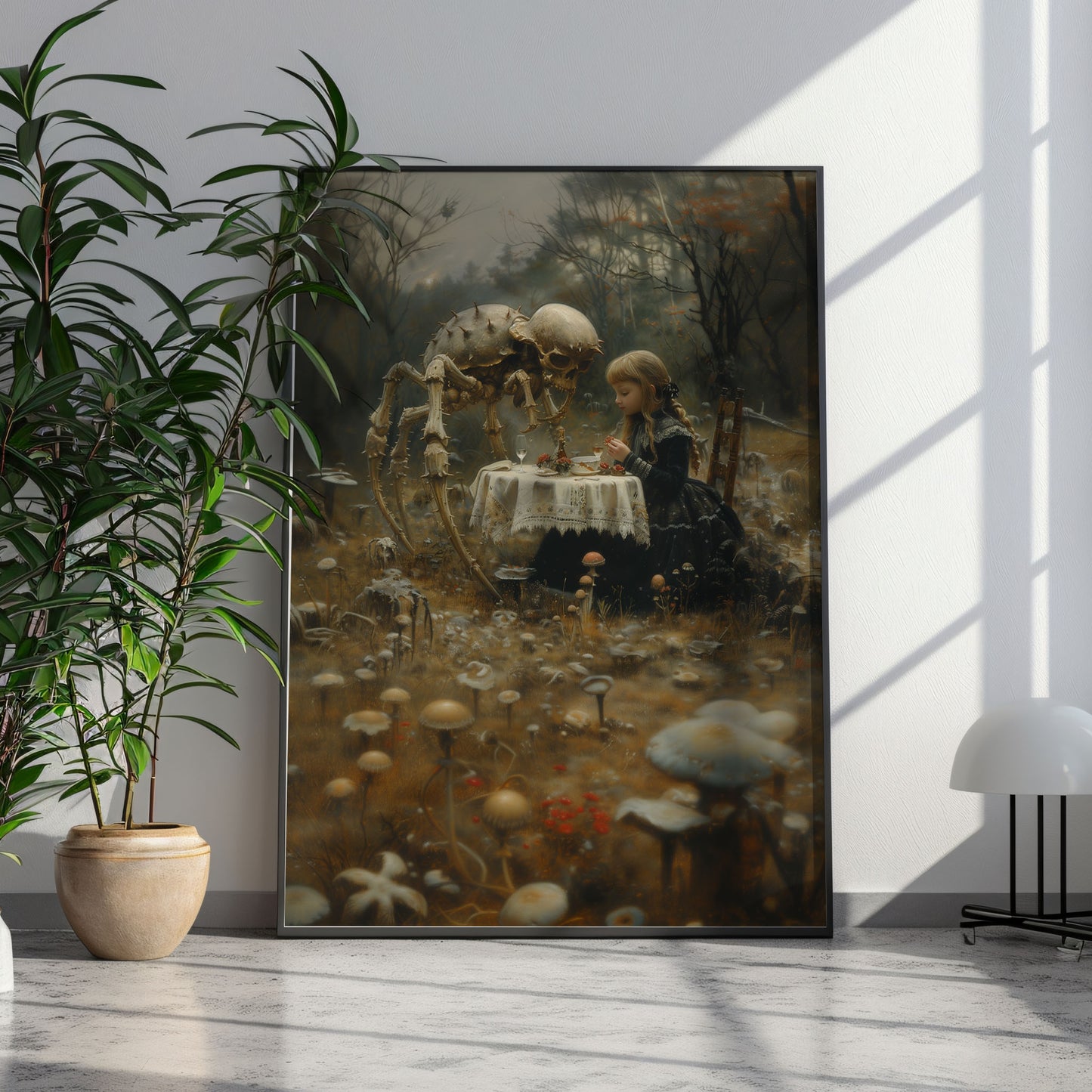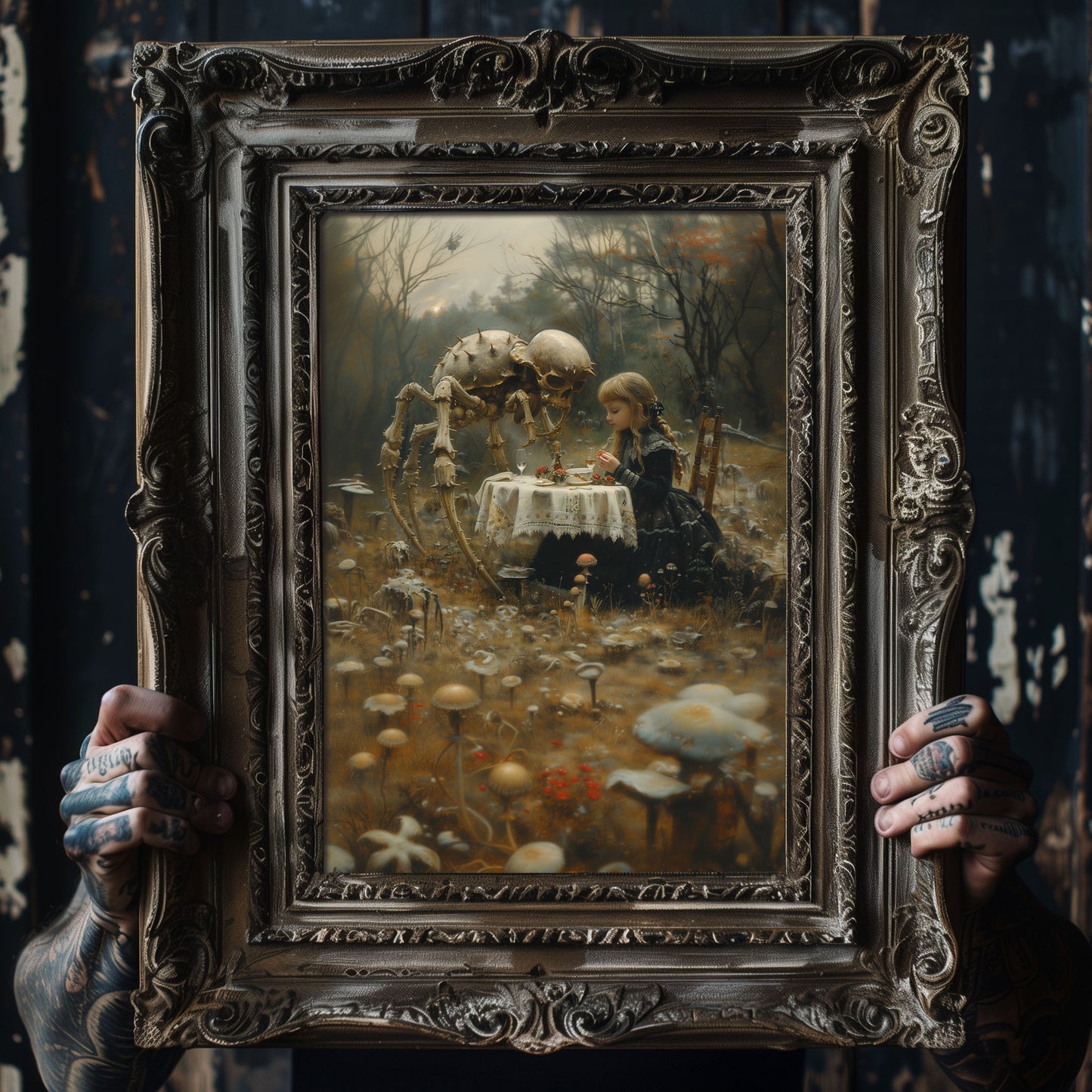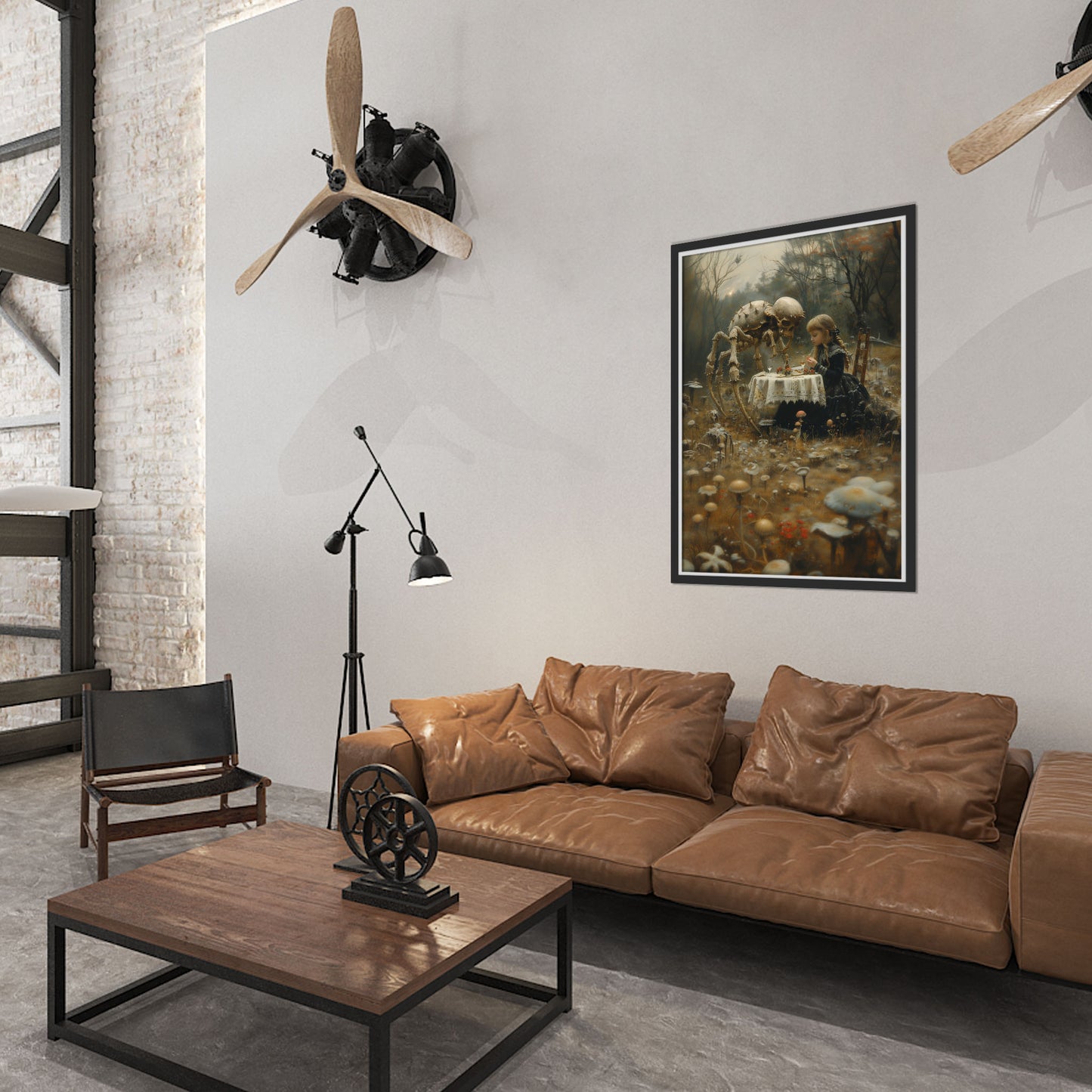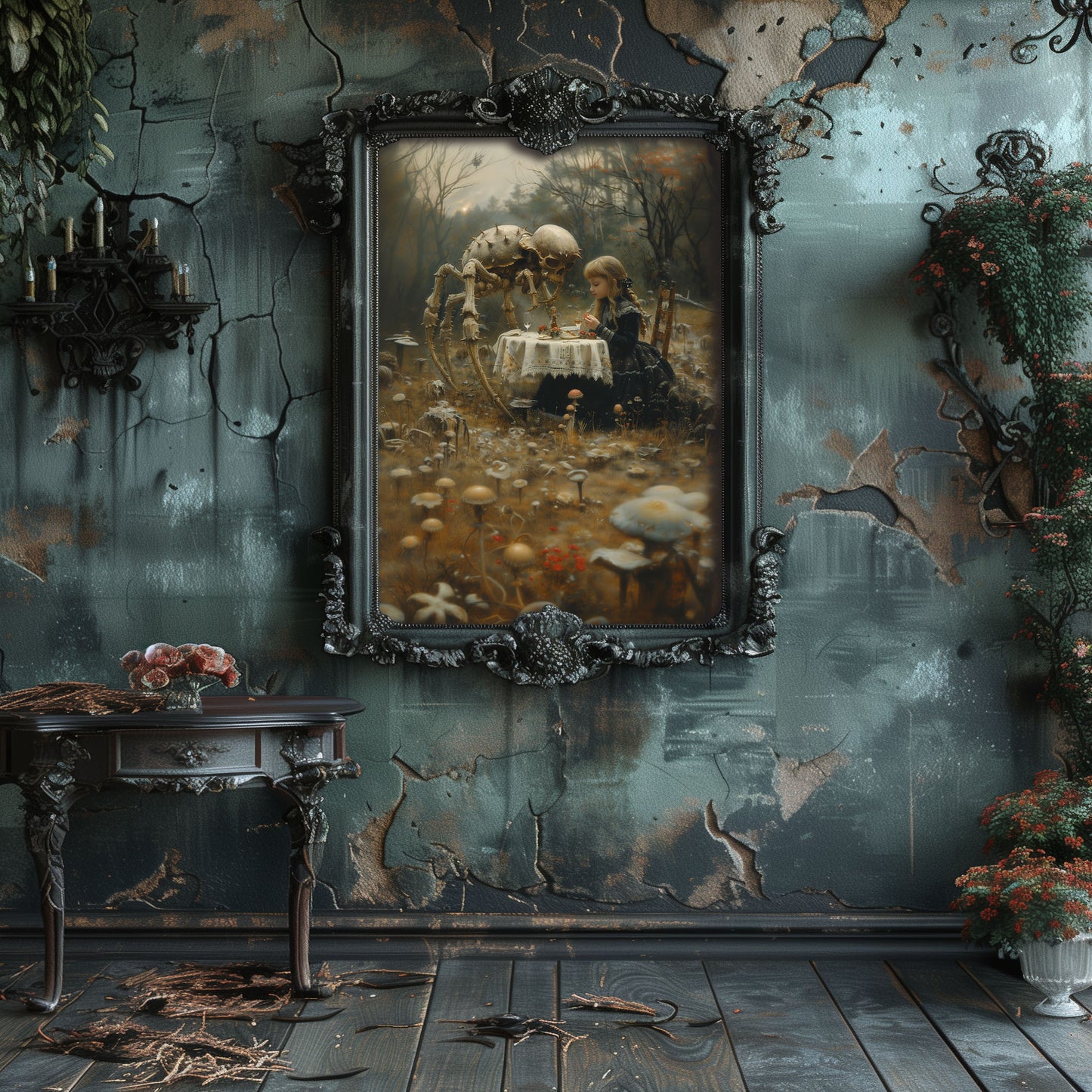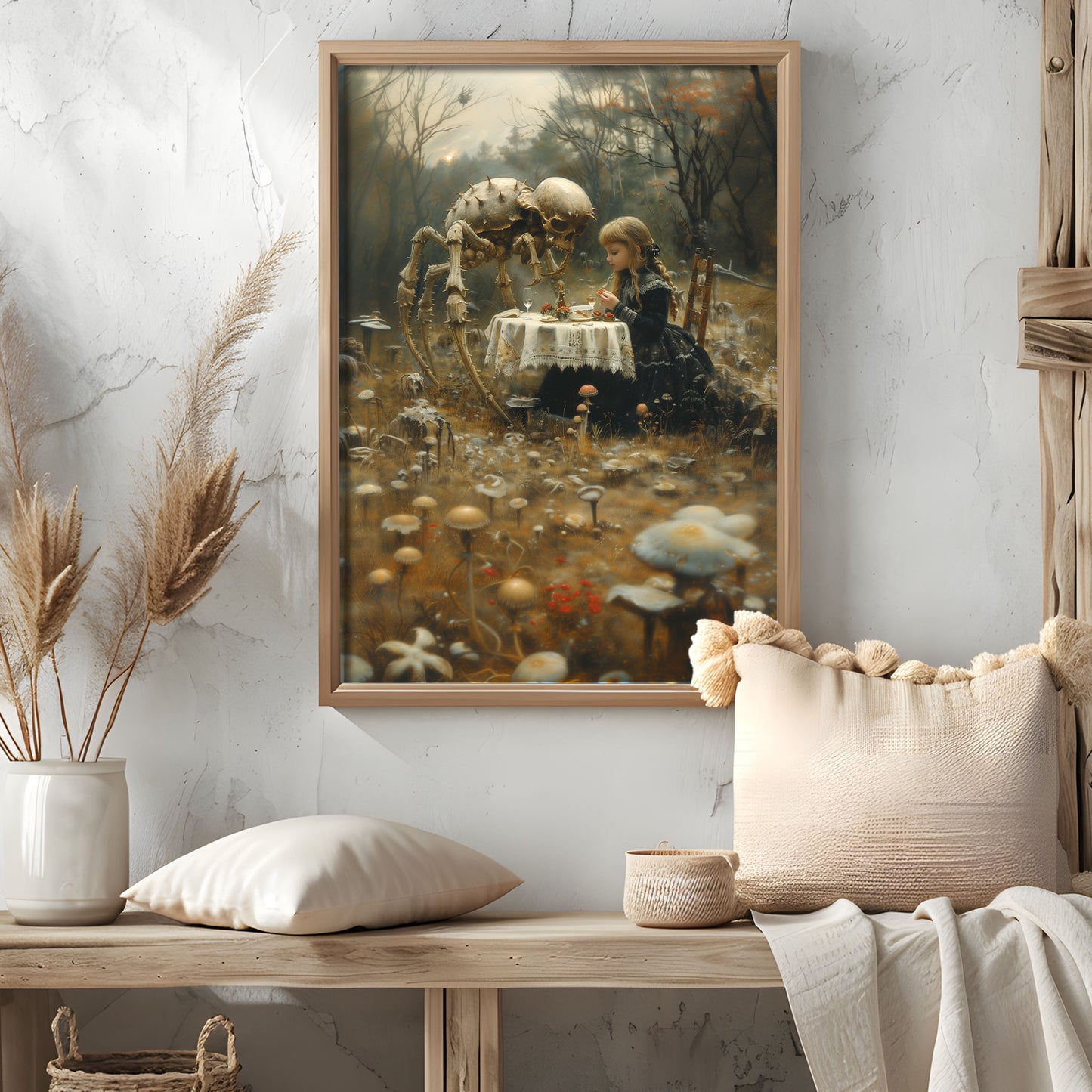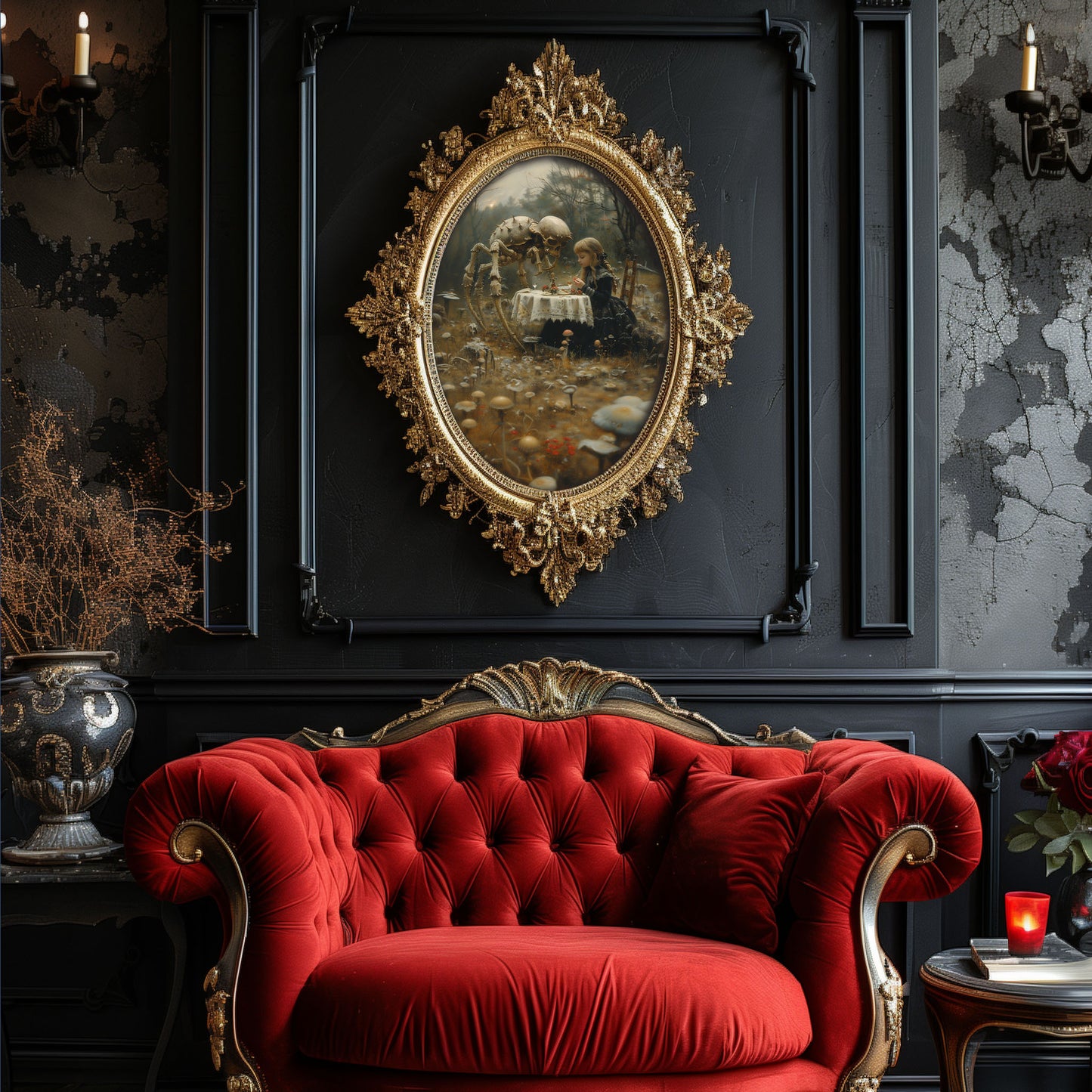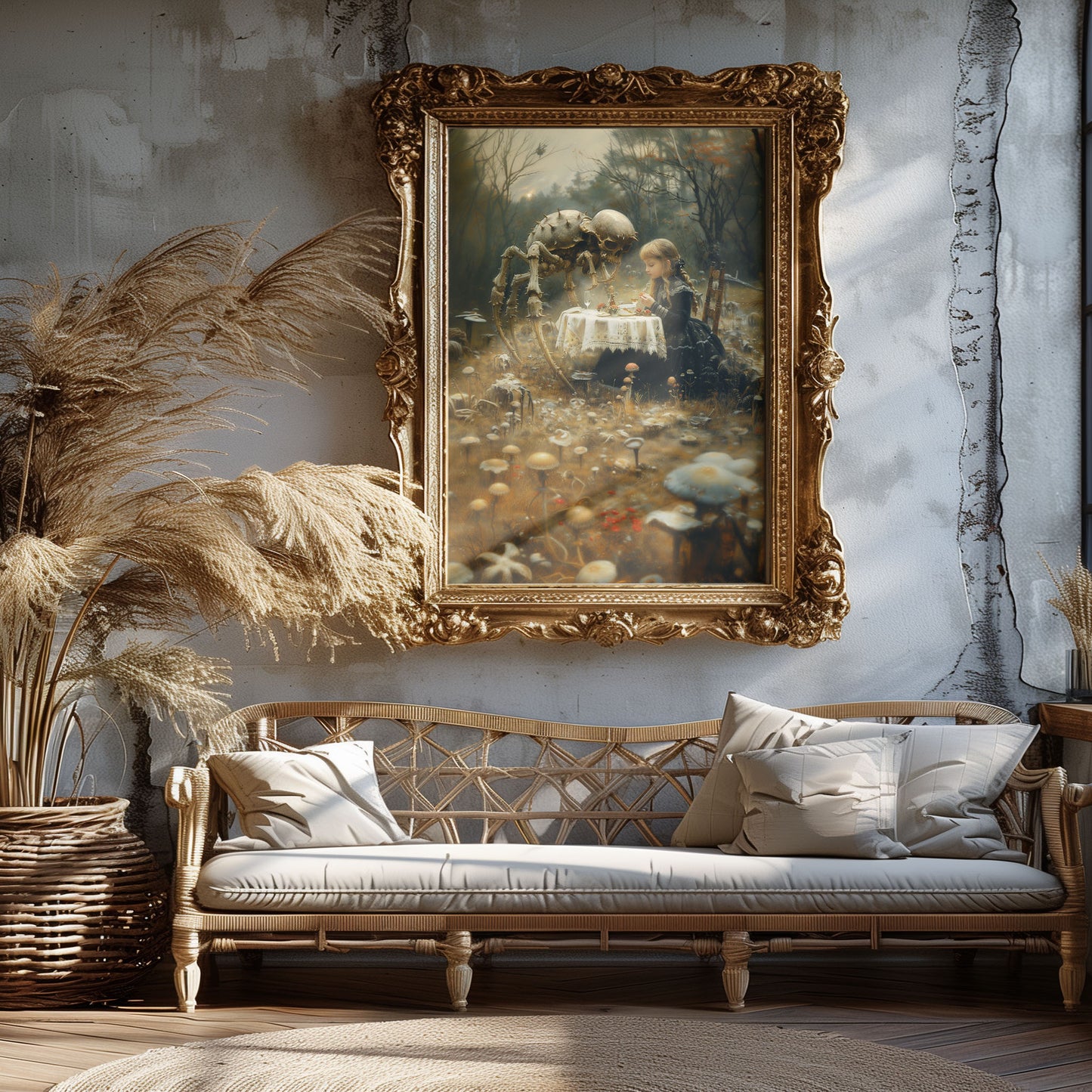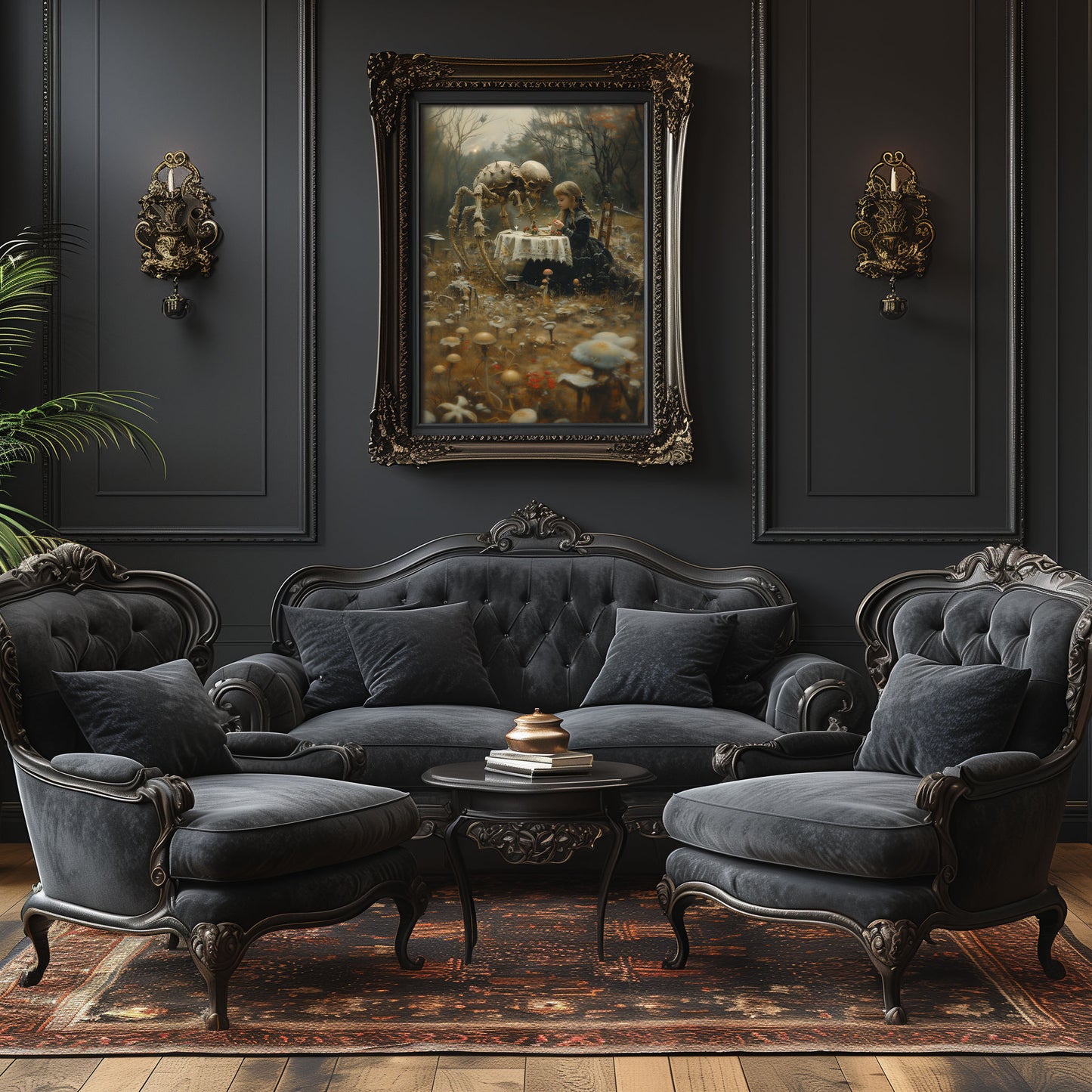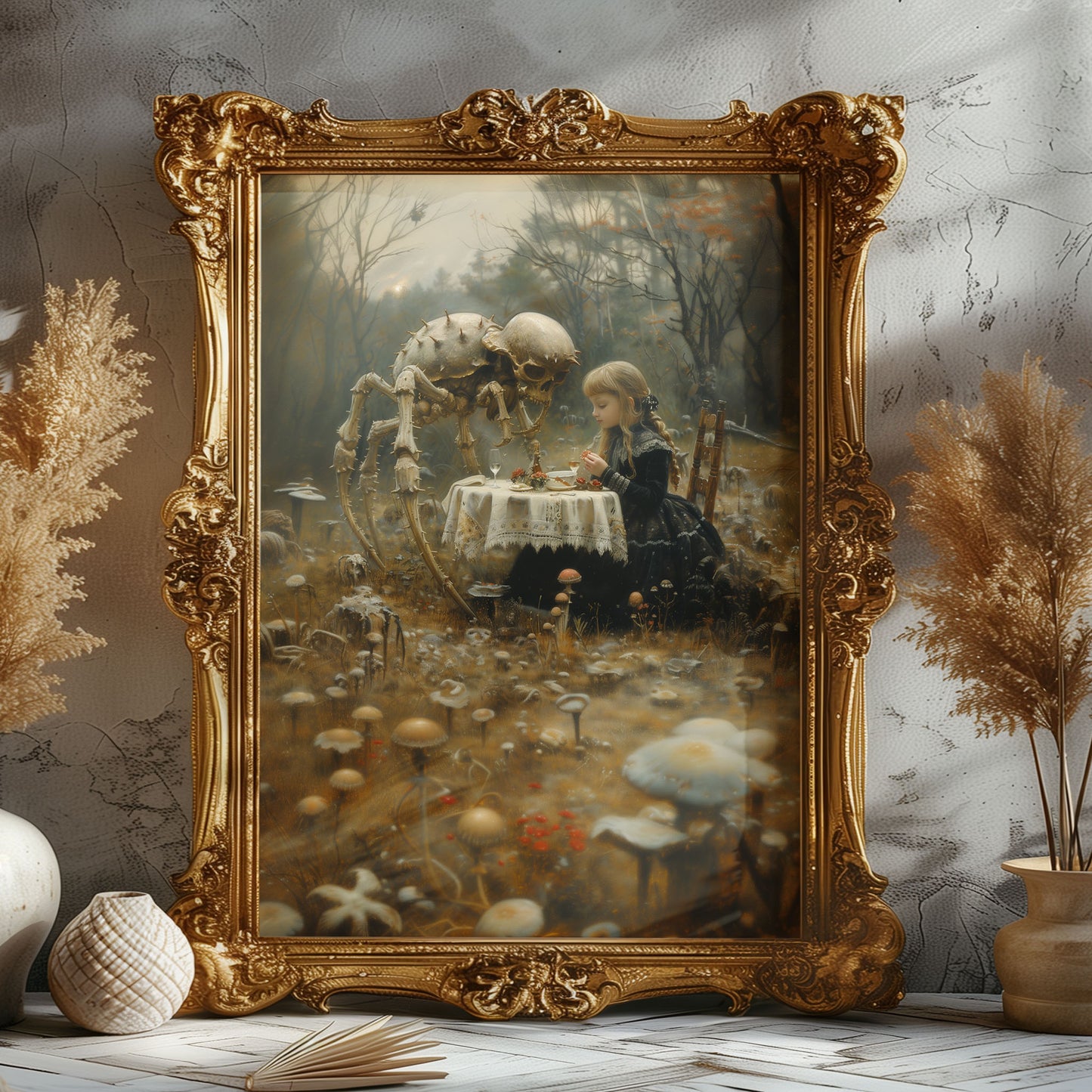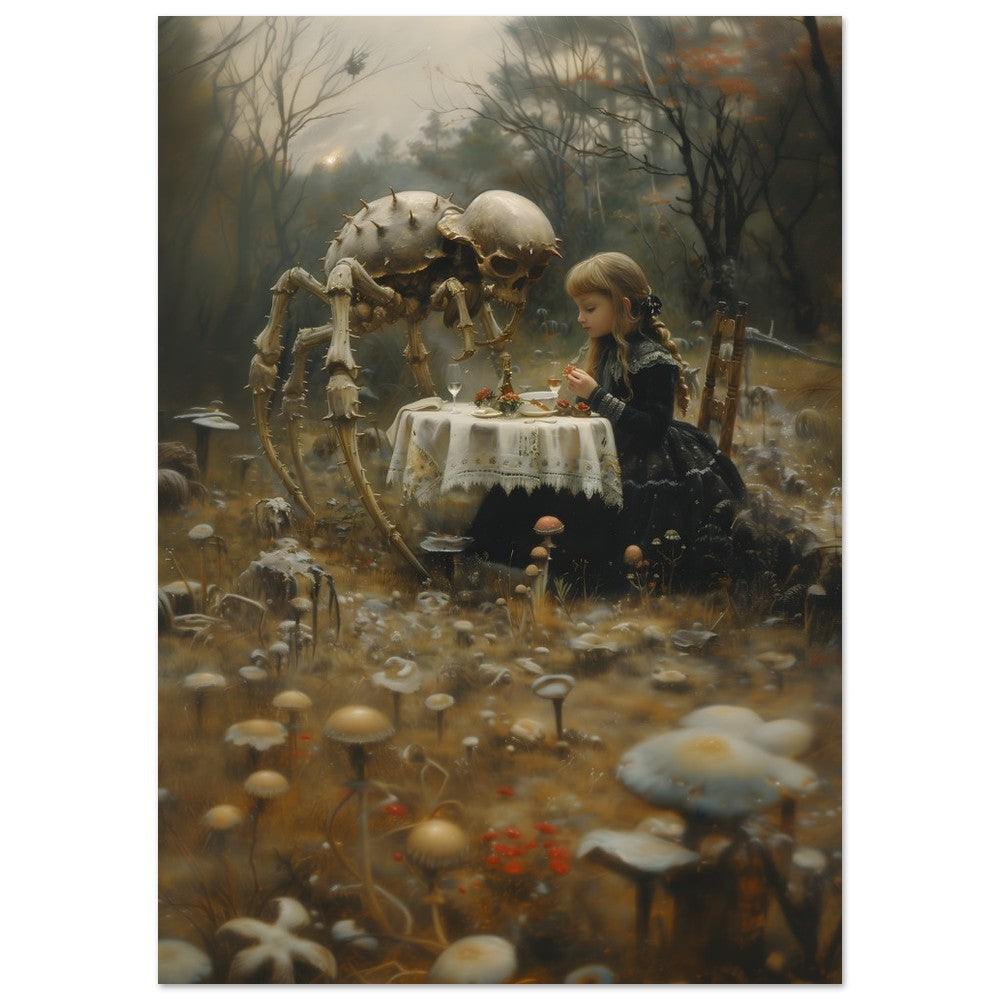
Macabre Elegance: A Little Girl’s Dinner with a Skeletal Spider
ChristianShare
In the dusky twilight of the imagination, where whimsy walks hand-in-hand with horror, there exists a hauntingly tender image: a small, elegantly dressed girl sitting across from a skeletal spider at a lace-covered dinner table, deep in a mushroom-filled forest. Both figures, despite their stark differences, exude serenity and connection.
This surreal and poetic scene, caught in a frame, speaks volumes without uttering a word. It is an exploration of innocence and mortality, the grotesque and the graceful - stitched together by uncanny harmony. Let's unravel the layers of this visual narrative, dissecting its composition, style, symbolism, and emotional weight.
Composition: Where Stillness Meets the Surreal
Center of Gravity
The visual composition is carefully constructed around the dinner table - the point where contrasting worlds collide. The skeletal spider, towering with an arachnid form made of fossilized bone, leans forward attentively. Across from it, the little girl sits prim and composed in a gothic black dress. Their symmetrical positioning around the table draws the viewer's gaze inward, creating a quiet, focused intimacy.
Framing the Story
The surrounding mushrooms and overgrown grass don't just set the stage - they act like a visual hush, muting the chaos of the world beyond. The forest recedes into misty darkness, creating a natural vignette that frames the central figures with soft focus and eerie calm.
The stillness of the image, the lack of any obvious action or movement, invites a prolonged gaze - demanding reflection rather than reaction.
Style and Texture: A Painterly Approach to the Fantastic
Visual Texture
Though digitally rendered, the image mimics the soft-brushed textures of oil paintings. The edges are smudged and dreamy, with an almost antique patina overlaying the entire scene. There's a velvety richness to the mushrooms and a waxy brittleness to the spider’s skeletal frame.
The tablecloth, intricately embroidered, feels tangible - its lace edges rendered with loving precision. This high level of detail in an otherwise misty environment creates a surreal paradox: vivid clarity within a dream.
Gothic Realism Meets Storybook Fantasy
The girl's face is porcelain-smooth, with flushed cheeks and golden curls - she seems almost like a doll. Her demeanor recalls Victorian portraiture, composed and emotionally neutral. This choice, paired with the macabre guest opposite her, creates visual dissonance that is jarring and poetic in equal measure.
The spider, while grotesque in form, is not threatening. Its skeletal construction has been softened by a sense of gentleness in posture. The horror here is not in the creature's appearance, but in the viewer’s expectation of fear - an expectation that goes beautifully unmet.
Background: The Fungus Forest of Forgotten Things
Symbolic Landscape
The forest floor is carpeted with mushrooms, fungi, and twisting roots, each bulbous cap and spindly stem rendered in earthy ochres, siennas, and ghostly whites. This fungal motif evokes decay, transformation, and the circle of life - a recurring theme in gothic and surreal art.
These aren’t merely decorative; they serve as visual metaphors for impermanence and hidden beauty. Mushrooms, after all, thrive in darkness and rot - paralleling how innocence can coexist with the macabre.
Muted Lighting and Fog
The light source is ambiguous - diffuse and low, like that of a cloudy autumn dusk. This golden-grey light creates deep shadows without harsh contrast. Mist winds through the trees, softening the scene into a painterly haze.
Branches loom skeletal in the distance, stripped bare like the spider, as if the world is in quiet mourning. These visual elements push the viewer into a dream-state - an eerie lullaby made of leafless branches and fungal blooms.
Foreground: Intimacy at the Edge of the Unnatural
Girl and Monster: A Relationship Reimagined
The most arresting aspect of the image is the girl’s calm. She does not recoil. She is not terrified. Instead, her hand gently hold something that looks like currants or pastries - another elegant contradiction. The skeletal spider mimics her manner, its head inclined politely toward her, as if listening.
This reversal of horror tropes is profound. Where one expects screams and chases, we receive companionship and shared silence. It reframes the monster, not as a predator, but as a partner. This shifts the image from being a macabre scene to a meditation on empathy, otherness, and acceptance.
Delicate Details
Every item on the table - glassware, roses, porcelain dishes - is rendered with loving precision. These touches elevate the encounter into a ritual. This isn’t just tea; it’s communion. The roses, tinged in dried red, might represent a faded romance or forgotten love - suggesting history between the two figures.
The way the girl's fingers curl delicately around her currants, and the spider's spindly limbs hover with equal restraint, shows mutual respect, maybe even fondness. Horror has been replaced with reverence.
Symbolism and Emotional Themes
Innocence Meets the Inevitable
The little girl embodies youth, purity, and the delicate construction of life. The skeletal spider, conversely, symbolizes death, time, and the grotesque anatomy that underpins beauty. Yet they coexist in perfect balance. There's no fear, only peace.
Their pairing suggests a coexistence of life and death, a visual poem about the transience of youth and the dignity of decay. It might also speak to loneliness - how even death, when faced calmly, becomes a companion rather than an intruder.
Elegy for the Imagination
This scene may not be of this world, but it speaks to every child who ever held tea parties for invisible guests, and every adult who’s learned to dine with their demons. It’s about facing the darkness with grace and dignity, about making peace with what frightens us.
Emotional Impact: Quiet Terror and Quiet Beauty
What lingers after viewing this image isn’t fright - but reflection. It offers a powerful emotional duality: beauty within horror, calm within chaos, connection within death.
That emotional tension - where your heart feels both heavy and soothed - is the hallmark of great visual storytelling. The artist has used the surreal not to shock, but to soothe. To give us a mirror that reflects our own fragility, our longing for connection, and the strange comfort found in confronting the unknown.
Conclusion: A Masterpiece of Gentle Gothic
This image is more than a digital painting - it’s a story, a mood, a philosophical question. What if death wasn’t the enemy? What if the monstrous could be kind? What if beauty could bloom on the forest floor of decay?
By blending gothic elements with childlike innocence and surreal symbolism, the artist has created a tableau that transcends horror or fantasy. It is poetic, meditative, and deeply human.
In a world that often rushes toward the light, this image reminds us of the sacred stillness in the shadows - and the unexpected friendships that may await there.


